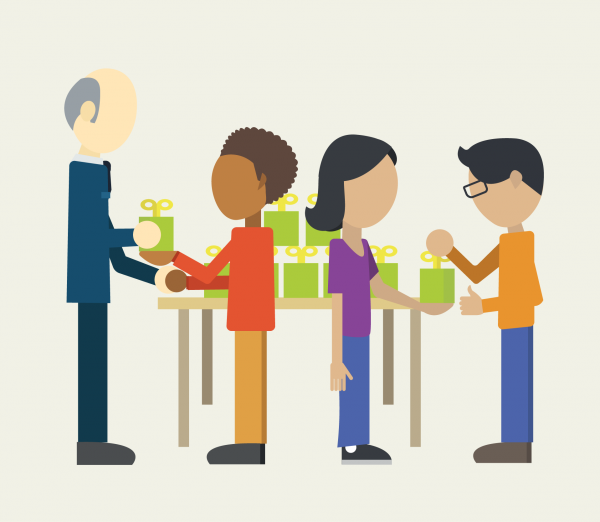
Tools/Materials Required: As needed
Depth of Knowledge: Extended Thinking
Teacher’s notes are in purple. For the student’s version, see Reimagine Waste Student Guide.
How might we reduce waste by changing our patterns of consumption and production? This challenge draws from UN Sustainable Development Goal 12: Responsible Consumption and Production, which seeks to ensure sustainable consumption and production patterns.
Explore the idea with the following questions:
For this challenge, consider what kinds of waste are created by you or people in your community. You may consider any type of waste: It could be food, energy, a natural resource like water, or material resources like plastic.
The project you create could be a product or device, a tool or a service, an initiative or campaign, a system, media, or the (re)design of a physical space or environment. If you need a little inspiration to get started, consider the stories below:
You may also get inspiration from learning about circular design. Check out this slideshow of everyday products that were redesigned to reduce or eliminate waste.
Practice a Thinking Routine
Learn more about different kinds of waste. You can do so with the resources linked above or by exploring the targets of SDG 12.Use a thinking routine such as Parts, Purposes, Complexities, Imagine If, or Parts, People, Interactions to deconstruct the objects and systems involved. As an example, students learning about plastic waste could use Parts, Purposes, Complexities and Imagine If to explore the design of a plastic product and how it could be designed differently. They could then use Parts, People, Interactions to explore the systems in which plastic products are produced, consumed, and discarded.
Practice Needfinding
What are the needs, challenges, and opportunities pertaining to waste in your community? Explore your surroundings to discover how you might be able to make a difference:
Define the Need
Use the information you collect to define the need or problem your project will address. Then, try the Problem Tree project to explore any causes or effects of the problem that your project could address. This project may also help students check their assumptions and redefine the need or problem to address.
Build Skills
Once you have identified a need, think about what you want to design to address it. What skills will you need to complete your project? Go out and build the skills you will need to bring your ideas to life. Below are just a few suggestions:
These are just a few suggestions among endless possibilities. Brainstorm what your project could be and gather the necessary resources to help you complete it.
How might we reduce waste by changing our patterns of consumption and production?
Remember that your project should address reducing waste in your own community. You may consider any type of waste: It could be food, energy, a natural resource like water, or material resources like plastic.
You can create anything–a product or device, a tool or a service, an initiative or campaign, a system, media, or the (re)design of a physical space or environment.
As you create your project, be sure to test it with users in your community to get their feedback and insights.
Produced by Digital Promise Global, with thanks to the Open Educational Resources listed throughout this guide. Distributed to Learning Studios schools as part of HP, Inc. and Microsoft’s Reinvent the Classroom.
This work is licensed under a Creative Commons Attribution-ShareAlike 4.0 International License. You may share this project or modified versions of it under this same license.